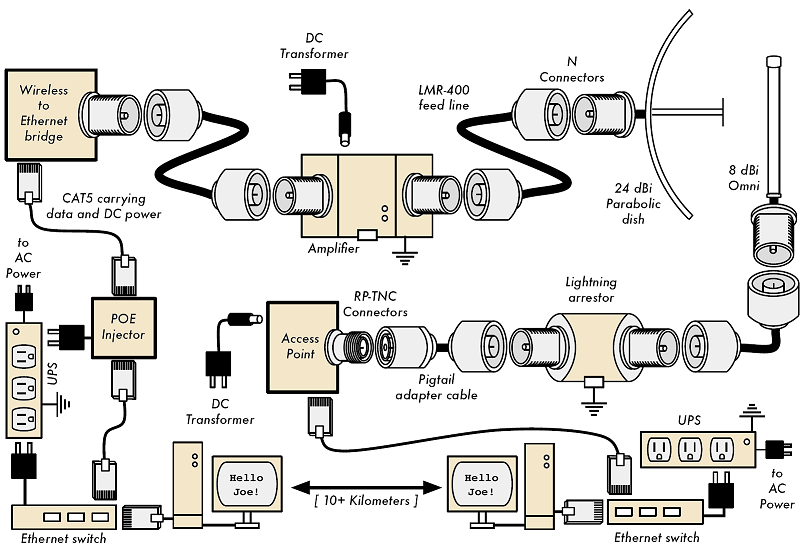| Wireles Networking is a practical guide to planning and building low-cost telecommunications infrastructure. See the editorial for more information.... |

|

Home  Networking Hardware Networking Hardware  Wired wireless Wired wireless |
|






|
|
|
Wired wirelessWith a name like “wireless”, you may be surprised at how many wires are involved in making a simple point-to-point link. A wireless node consists of many components, which must all be connected to each other with appropriate cabling. You obviously need at least one computer connected to an Ethernet network, and a wireless router or bridge attached to the same network. Radio components need to be connected to antennas, but along the way they may need to interface with an amplifier, lightning arrestor, or other device. Many components require power, either via an AC mains line or using a DC transformer. All of these components use various sorts of connectors, not to mention a wide variety of cable types and thicknesses. Now multiply those cables and connectors by the number of nodes you will bring online, and you may well be wondering why this stuff is referred to as “wireless”. The diagram on the next page will give you some idea of the cabling required for a typical point-to-point link. Note that this diagram is not to scale, nor is it necessarily the best choice of network design. But it will introduce you to many common interconnects and components that you will likely encounter in the real world.
While the actual components used will vary from node to node, every installation will incorporate these parts:
The actual selection of hardware should be determined by establishing the requirements for the project, determining the available budget, and verifying that the project is feasible using the available resources (including providing for spares and ongoing maintenance costs). As discussed in chapter one, establishing the scope of your project is critical before any purchasing decisions are made.
|
|
Home  Networking Hardware Networking Hardware  Wired wireless Wired wireless |
|
Last Update: 2007-01-13


